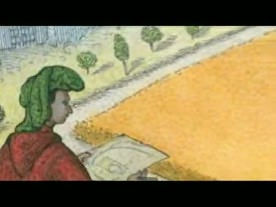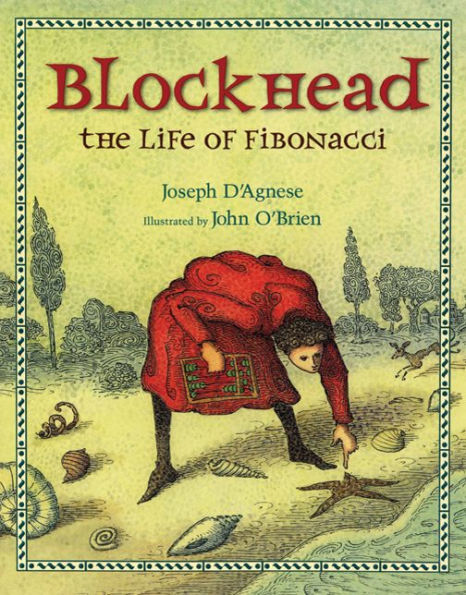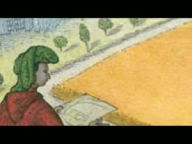Reading Group Guide
Blockhead: The Life of Fibonacci is a children's picture book about the famous mathematician from Pisa, Italy, who discovered the Fibonacci Sequence, which governs how so many objects in nature grow and flourish. The book is set in Italy and the world of the Mediterranean during the Middle Ages. John O'Brien, a talented cartoonist for the New Yorker magazine, provided the charming illustrations. The book is supported by an author website (blockheadbook.com) and Facebook fan page.
Blockhead is the kind of book parents and grandparents would buy for children who adore math, history and nature. The book can also be used by teachers who want students to study math concepts such as number patterns, Roman numerals, and place value.
This book helps a child begin to ask such questions as:
Why does a starfish have five arms? Why do lilies have three petals? Why is there a spiral buried in the face of a sunflower?
The answers to all these questions are found in the Fibonacci Sequence.
Our book is designed for repeated readings. Children are prompted to search for Fibonacci objects hidden in the illustrations. The book unites what kids learn in school with their wondrous experience of the natural world around them.
And it all started in the mind of a boy who lived more than 800 years ago!
Fast FactsFibonacci lived in Pisa, Italy—the city of the Leaning Tower—during the Middle Ages. He traveled with his father to North Africa and studied the numerals used by the merchants there. In Italy, people used Roman numerals that looked like this: M X C V L D III.In Africa, merchants used numerals that looked like this: 1 2 3 4 5 6 7 8 9 0Fibonacci imported the numerals back to the Western world. He is the reason we today understand how to use place value and the numeral zero.Fibonacci's famous rabbit problem produced a series of numbers that grows like this:
1, 1, 2, 3, 5, 8, 13, 21, 34, 55, 89, 144, 233, 377This string of numbers appears repeatedly in nature. They govern how nature organizes the growth of all living things. (To be historically accurate, Fibonacci never knew the significance of the sequence, but our book imagines that he did.)You can use the numbers to create spirals. That's why so many objects have spiral shapes: snails, nautilus shells, ocean, waves, pinecones, sunflowers, and so on.
TEACHERS: Ideas for Classroom Activities
What's a number? Create your own numerals. Numerals are symbols!
Use an abacus. What's easy/hard about it?
Roman vs. Arabic numerals. Ask them to explain via essays, drawing, presentation the pros and cons of each.
Value of Place Value. Write about a trip to a world that doesn't use zero.
Travel distances. Plot Fibonacci's journey from Pisa to Bugia, and other sites.
Ancient number systems. Research numbers from country Fibonacci visited. (Kids especially love working with Egyptian hieroglyphics!)
Explain the rabbits. Using art and words, explain how Fibonacci got 233 or 377.
Name my pattern. Make a pattern, challenge your friends to solve it.
Graph nature. Count petals on flowers, graph it. Young kids can inspect nature: Halve apple to find star.
Following directions. Make a Fibonacci spiral on paper. Write how it works.
Fibonacci Nature Walk. Photograph or draw numbers you see in nature.
Fibonacci Nature Walk II. Photograph or draw spirals you see in nature.
Follow the Sequence. Where else does the Fibonacci sequence appear? There have been many claims that Fibonacci numbers appear in Music, art, architecture, etc. Have your kids learn a little about these theories, and then go out and prove it!
Hold a Fibonacci Fundraiser. Join tax-deductible Fibonacci Giving Project. Details on website. Ask for donations in Fibonacci amounts: $1, $2, $3, $5...
PARENTS: Help Your Child Explore Fibonacci in Nature
1. Visit a garden where they can inspect and count flower petals. If you don't have a garden nearby, buy a few dollars' worth of flowers at a florist and let kids sort them according to Fibonacci numbers.
2. Plant your own Fibonacci Garden. Let kids research which plants display Fibonacci numbers, and decide which you'll start from seed, and which will be bought live and planted. As each plant blossoms, ask kids to make a record of the numbers they see, using either a camera or pencil and paper.
3. Find examples of spirals in their new garden, at the supermarket, in the woods, or at the beach. If you can't visit a beach, visit a shop that sells seashells and buy a bag and let the kids sort them for attributes. Visit a museum or rock shop to inspect fossils displaying spirals.
4. Research Fibonacci's life and times. Look at pictures of the Leaning Tower of Pisa, investigate books on the Middle Ages, and find Pisa and the Algerian city of Bugia (now called "Bejaia") in an atlas. Plan an imaginary trip through the Mediterranean following in the footsteps of Fibonacci.
5. Create your own number patterns and challenge their friends—or you—to crack the code. See how far they can extend the Fibonacci Sequence. (Keep lots of paper handy!)
6. Invent numerals! A numeral such as 1, 2, or 3 are just symbols for a larger concept of a number. The Romans used letters to express numbers. But your kids can easily come up with their own numerals. Let them try.
7. Write "Fibs"—Fibonacci poetry—using the number pattern as a guide. Learn about Fibs here: http://
gottabook.blogspot.com/2006/04/fib.html
8. Research other men and women in the sciences and write and illustrate their own picture books using
Blockhead as model. Let them include an activity page like the one in Blockhead.
9. Older kids can share/teach what they've learned with younger kids.
10. Serve up some Fibonacci apples! (Slice an apple across its belly—not stem to stem—so they can see the five-pointed star in the center!)





